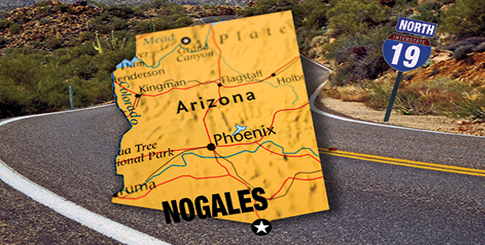Topics of the two-day course include proper permits, inspection procedures, securing loads, and observing weight limits. Stakeholders hope the training will allow the Nogales ports to move from their current load of around 2,000 trucks per day to their full capacity of 4,400.
While numbers aren’t yet available on the effectiveness of the training program, it sends a message to shippers and brokers that the government is taking port delays seriously and is working to correct them.
Despite the drop in quantity, notes Arizona Sky’s Franzone, “Our company has seen major improvements in efficiency and capacity during the last few years.”
Bennen even manages to put a positive spin on the loss of some shipping capacity to Texas ports: “Texas shipment increases mean that the produce gets to eastern markets sooner,” he observes, “and that is best for the customers.”
The industry obviously agrees there is reason to hope; the Fresh Produce Association of the Americas hosted its annual convention in November, and called the forty-ninth event one of the largest in its history. Trade issues, including North American Free Trade Agreement (NAFTA) modernization efforts, as well as border crossing expansion and the state of the Nogales port, were among the topics discussed by attendees.
Adapting to Change
The competition between Texas and Arizona isn’t slowing down, though one could argue the rivalry is spurring both import hubs to up their game for the betterment of the industry.
Meeting challenges
While the Pharr crossing jousts with Nogales over capacity, the Lone Star State continues to fortify its infrastructure and change its regulations to adapt to the uptick in produce imports. The Texas legislature continues to explore proposals to streamline the border crossing process, from weight limits to inspection protocols.
The measures don’t stop there; construction of a massive warehouse and cold storage facility by the Los Indios crossing in Texas began in November and is projected to finish in February. The new facility will help reduce traffic at the Pharr crossing while accommodating more trucks and shipments from Mexico.
Nogales is reacting with streamlining its ports, upgrading technology, dealing with staffing issues (including a long-awaited infusion of federal dollars meant for training new customs officers), and expanding the Foreign Supplier Verification Program to make food safety rules less costly and time consuming for Mexican exporters.
Mexico, too, has stepped up to meet new challenges and opportunities. The construction of the Baluarte Bicentennial Bridge from Durango to Reynoso may be a boon for Texas ports, but Nogales has not been forgotten. It’s a hotspot for shipments of previously little-known produce, including fruits and vegetables targeted at America’s growing Hispanic and Asian populations, and the explosive demand for organics.



